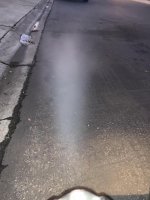Yes and no. I do have my concerns about him posting there was metal in the filter. But going forward with a good attitude, these moto engines tend to differ in some ways than car engines. Yes they function the same, but most times on a valve impact incident, the reciprocating parts and bearings fair very well. Granted the head and valves take a beating. He replaced the head assembly. These heads being aluminum can not be magnafluxed like an iron head on a car. Like an aircraft engine head sometimes specialty shops can repair them, but in this case he got a replacement. As for deglazing the cylinder walls, Nikasil is a pretty tough surface and holds up well without glazing, add to this, you should use a diamond hone when working with Nikasil, as a conventional stone is too soft and can polish the cylinder walls making things worse.
Granted the engine may be coming out and seeing a full teardown or simpler replacement. So much of this topic reverts to speculation by us posting since we are not there to work on it ourselves. I am optimistic it will run and run well, just have my reservations about the metal contamination in the oil. From the initial time I read this topic, and even today, I still wonder if the previous owner simply over revved the engine and the valve made contact with the piston dome. Add to this, the same original owner may have run the oil low or had a habit or revving it, and trashed a bottom end bearing.
Again, I remain optimistic for this guy getting it running well, and hopefully the metal debris is simply break in residue or normal wear material. Myself, I did not see the debris and honestly do not know.

